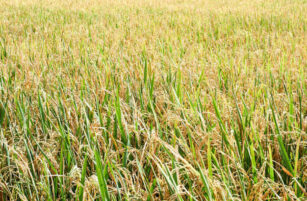- La Niña should bring dry weather to Brazil between December and February.
- This is when the first corn crop will be developing.
- The adverse effects could be amplified as farmers use less fertilizer due to high prices.
Forecast
Our 2021/22 price forecast for Chicago corn (Sep/Oct) remains unchanged in a range of 4.5 to 5 USD/bu. The average price since the start of the new crop is running at 5.4 USD/bu.
Market Commentary
Despite the macro sell off across all markets, corn had a positive week, both in the US and EU, while wheat was basically unchanged. The geopolitical tension between Russia and Ukraine weighed more than the macro weakness.
Wheat pulled corn higher at the start of last week, owing to fears of a lower quality crop in Australia due to heavy rains. We then had the large macro selloff, but US corn exports were better than expected. Ukrainian corn is still facing logistical issues and rising tensions at the Ukrainian border took corn more than 2% higher in both geographies.
US net sales came in at 1.43m tonnes last week. This is 58% higher week-on-week and 40% above the four-week average.
US corn is 95% harvested, which remains above the five-year average. Russian corn is 91% harvested. Ukrainian corn is 87% harvested and is delivering very good yields. Production could even surpass the market’s 39m tonne estimate.

In Brazil, there are now concerns of potential yield losses in the first corn crop as the local weather office has formally confirmed that La Niña has arrived, and the impact will be felt between December and February.
The UK published its first crop forecast, projecting a 16.9m tonne wheat crop, up 2.36m tonnes year-on-year, but still the second lowest since 2013/14.
The Russian spring wheat harvest is 97% complete. US Winter Wheat planting is 96% complete, up 1% from the five-year average. Its condition fell 1% to 44% good to excellent. French wheat planting is 95% complete and is ranked at 99% good-to-excellent.
Russia increased its wheat export tax again to 80.8 EUR/mt as of the 1st December.
We still think there are two potential problems brewing: the impact of higher fertilizer prices and La Niña.
The fertilizer issues continue to worry many farmers and the alarms have sounded in Argentina with many relying on imports whilst yields already look poor.
As a reminder, both Russia and China have restricted fertilizer exports and Russia is the world’s largest exporter.
We then have the risk of La Niña, which has been there for some time, but it has now been confirmed. This should result in dry weather in Brazil between December and February, just when the first corn crop (25% of Brazil’s production) will be developing. The risk of lower yields is there, which could be amplified if farmers use less fertilizer.
We could have some volatility this week on the back of the new COVID variant forcing funds to reposition their bets. Soybean and corn could be hit if the market thinks demand for biofuels will be lower, but we still see a tight balance sheet for corn and wheat, thus prices should remain supported. If there’s a conflict between Russia and Ukraine, grains will rally.
Other Insights That May Be of Interest…
How Will a La Niña Impact CS Brazil’s 2022/23 Cane?
Explainers That May Be of Interest…













